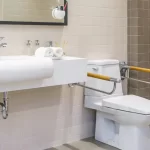Electrical power is the flow and existence of electrical charge. With electricity you can transfer energy to do many simple tasks. An object that lets electricity flow through it is known as a conductor. Copper wires and many other metal objects are good conductors, letting electricity to pass through them and send the current through itself. If the current is not wanted, the conductor will let the electricity go across it by simply touching a ground surface. This is how electricity flows in our home.
The flow of electricity in our home occurs when there is a circuit or panel with several conductors carrying varying amounts of electric current around a central point. The electricity is induced into the metal carrying conductors which create the movement of the current. There are different types of electricity such as direct current (DC), alternating current (AC), and power line conductors. The difference between DC and AC is that AC is a constant current while DC changes depending on the flow of air and water through a power grid. AC is usually used in larger commercial electrician’s generators, and for lighting in large buildings.
A DC current is made when a battery is charged and an alternating current is created by passing current through a wire. The wire acts as a switch to turn the DC current on and off. AC energy is created the same way but with an alternating current the wire acts like a magnet and pulls electrons from the batteries. These electrons are then sent to an alternator or generator, which produces electrical energy to power an appliance or lighting in a home.
Power lines are buried underground and carry electricity from points near a town to points far away. A power line is created by connecting a series of homes that need to use the same supply point to create an electric current that can be used to light homes and businesses. These electric currents are necessary because it would be impossible to produce electricity in each town individually. Another advantage to using this type of electrical energy is that there is no pollution because there are no wires or transformers that are needed to transmit the electricity across the country.
The movement of an electric current makes a combination of atoms and electrons happen. When two different types of atoms or electrons separate from each other the result is a kinetic energy which is converted into electrical energy by a diode. One way of converting kinetic energy to electrical energy is known as electro-mechanical interference. There are two types of interference that may occur when one electric charge tries to pass another. These types of interference are referred to as conductive and non-conductive.
The non-conductive type of interference will only affect how the electricity flows between the conductor and the nonconductor. It will not affect the flow of electricity through a conductive conductor and will not affect the flow of electricity through a non-conductive one. On the other hand, the conductor will experience a slight change in its resistance to the passage of electricity if it is shorted out. Shorting out a conductor is when it’s connected to electricity so that its value is lower than it should be. In order for an electrical charge to properly flow between two or more conductors the total amount of electricity that should pass through the conductor should be the same.


 The Role of Glass Repair and Replacement in Preserving Architectural Integrity
The Role of Glass Repair and Replacement in Preserving Architectural Integrity  Accessible Bathroom Design – Making Bathrooms Safe and Comfortable for Everyone
Accessible Bathroom Design – Making Bathrooms Safe and Comfortable for Everyone  Manchester Kitchen Fitters Unveiled: How to Make the Right Choice
Manchester Kitchen Fitters Unveiled: How to Make the Right Choice  Bathroom Tiles Are Practical, Easy to Clean and Highly Customizable
Bathroom Tiles Are Practical, Easy to Clean and Highly Customizable  The Ultimate Guide to Kitchen Remodeling
The Ultimate Guide to Kitchen Remodeling  Revamping Your Home Office For Productivity and Creativity Boosters
Revamping Your Home Office For Productivity and Creativity Boosters  The Pros and Cons of Different Kitchen Countertop Materials
The Pros and Cons of Different Kitchen Countertop Materials 

